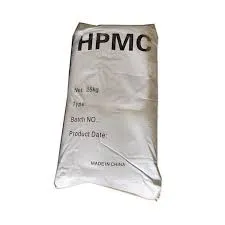
Nov . 15, 2024 20:41 Back to list
hydroxypropyl methylcellulose hpmc
The Versatility of Hydroxypropyl Methylcellulose (HPMC) Applications and Benefits
Hydroxypropyl methylcellulose (HPMC) is a semi-synthetic polymer widely utilized in various industries due to its unique properties. This cellulose ether is derived from natural cellulose and is characterized by its excellent film-forming abilities, water solubility, and non-toxic nature, making it an essential ingredient in numerous applications.
The Versatility of Hydroxypropyl Methylcellulose (HPMC) Applications and Benefits
In the food industry, HPMC serves as a thickening agent and an emulsifier. It helps stabilize emulsions, which is particularly important in products like sauces and dressings, ensuring that the ingredients maintain a uniform texture and appearance. The ability of HPMC to retain moisture also contributes to improved shelf life, making it a valuable additive in baked goods and other processed foods.
hydroxypropyl methylcellulose hpmc

The construction sector benefits from HPMC as well. It is commonly added to cement-based products, such as tile adhesives and plasters, to improve workability and prevent segregation. Its water-retaining capacity ensures that these materials maintain the necessary moisture for proper curing, leading to stronger and more durable constructions.
Moreover, HPMC has found a niche in the cosmetics and personal care industry. Its film-forming properties make it a popular ingredient in lotions, creams, and hair products, providing a smooth texture and enhancing product stability. As consumers increasingly seek out safer and natural formulations, HPMC’s non-toxic and biodegradable characteristics align well with market demands.
Environmental considerations also play a role in the rising popularity of HPMC. As a biodegradable polymer, it presents a more sustainable alternative to many synthetic compounds, appealing to eco-conscious consumers and manufacturers. This shift towards environmentally friendly products is particularly relevant as industries strive to reduce their carbon footprint and embrace greener practices.
In conclusion, hydroxypropyl methylcellulose is a versatile and valuable additive across various sectors, including pharmaceuticals, food, construction, and cosmetics. Its multiple functionalities, coupled with its safety and environmental benefits, make it an increasingly popular choice for formulators looking to enhance product performance while meeting modern sustainability standards. As research and development continue, the potential applications of HPMC are expected to expand, further cementing its role as a crucial ingredient in everyday products.
-
Versatile Hpmc Uses in Different Industries
NewsJun.19,2025
-
Redispersible Powder's Role in Enhancing Durability of Construction Products
NewsJun.19,2025
-
Hydroxyethyl Cellulose Applications Driving Green Industrial Processes
NewsJun.19,2025
-
Exploring Different Redispersible Polymer Powder
NewsJun.19,2025
-
Choosing the Right Mortar Bonding Agent
NewsJun.19,2025
-
Applications and Significance of China Hpmc in Modern Industries
NewsJun.19,2025







